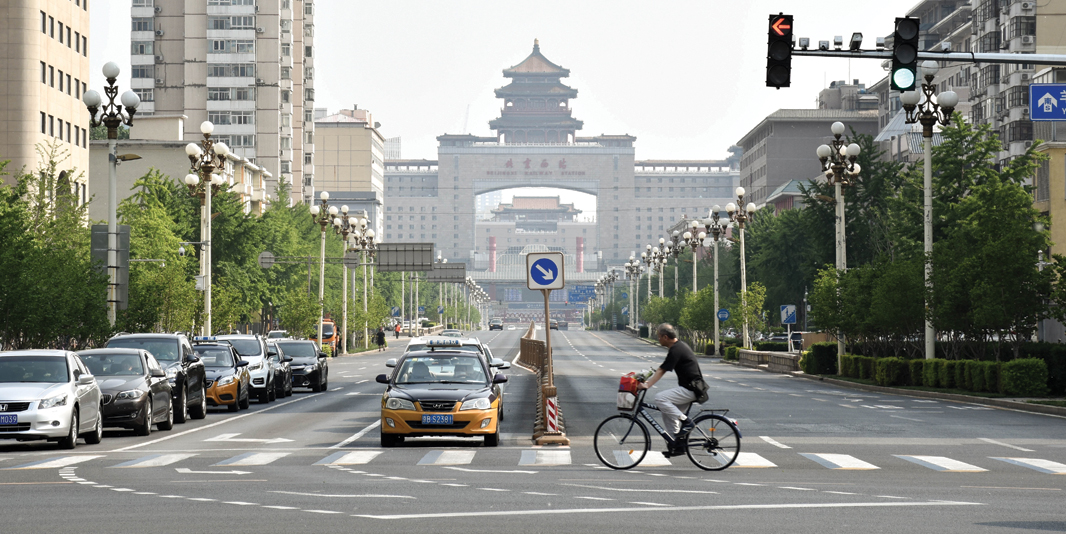What AM Best Says
AM Best: China Outlook Shaped by Premiums, Profitability and Regulation
Auto insurance comprises the majority of China’s nonlife market.

EMPTY STREETS: Traffic is light on the Street of Eternal Peace in Beijing during the COVID-19 pandemic in May 2020. However, new vehicle sales in China have recovered to the pre-pandemic level since the third quarter of 2020.
Christie Lee, senior director of analytics for Northeast Asia, AM Best, said AM Best is maintaining its negative outlook on the China nonlife insurance market. Positive factors include regulatory involvement and the ongoing economic recovery. Lee spoke with AM Best TV about the performance of the nonlife market and the silver linings that are ahead in the future. Following is an edited transcript of the interview.
What is the AM Best outlook for the China nonlife insurance market?
We're maintaining a negative outlook on the China nonlife insurance market mainly because we continue to observe, firstly, pressure on motor premium growth and underwriting performance, secondly, potential execution risk on non-motor line expansion and subsequent negative impact on profitability, and lastly, investment challenges.

Motor continues to account for the lion’s share of nonlife insurance premiums. We observe that this class of business grew at a slower pace in past years, partially attributed to COVID-19 in 2020.
Christie Lee
AM Best
How did the market perform last year?
China's nonlife segment did quite well relative to its neighboring countries. It grew by 5.8% year-on-year in terms of direct premium written over the first 11 months of 2020. This growth was steered by the non-motor line of business.
Motor continues to account for the lion's share of nonlife insurance premiums. We observe that this class of business grew at a slower pace in past years, partially attributed to COVID-19 in 2020, and now makes up slightly less than 60% of the market.
With the announcement of a comprehensive motor insurance reform policy that took effect last September the monthly volume of motor premiums for October immediately contracted by 17%, compared with September. We expect that the profitability of the motor business would continue to come under pressure over the next 12 to 18 months.
On the non-motor front, health insurance was the biggest growth driver. The ongoing COVID-19 pandemic, which has helped to raise consumer risk awareness and buying sentiment for health insurance coverage, propelled a 44% increase in premiums for the first quarter of 2020.
However, the barriers to entry for health are low and the relatively similar product offerings tend to have simple features which are easy to replicate. For smaller companies, the health line of business offers an easy option for portfolio diversification.
We note that this has also led to pricing competition and climbing combined ratios, which have in turn resulted in an increasing number of insurers experiencing underwriting losses in this line.
On the investment front, we note that the nonlife market's overall profits continue to rely heavily on investment returns and are characterized by high concentration in domestic capital markets. Fortunately, China's domestic capital market has performed quite well to date. Despite significant volatility over the first half of 2020, AM Best expects the investment return will continue supporting the nonlife insurance bottom line over the near term. Given the market uncertainty, many companies had been playing a more active role in the management of the investment portfolios. When government bond yields fell in March and April last year, insurers had the opportunity to realize some capital gains on the bond portfolios as well as increasing the equity holdings at low market valuations.
Also, [the China Banking and Insurance Regulatory Commission] had lifted its cap on equity allocation to up to 45% in July last year, which allows players with strong capitalization greater flexibility and autonomy for investment decisions. Our view is that Chinese nonlife companies will maintain rational strategic asset allocation and we don't expect to see a material increase in equity allocations.
Is there any silver lining that you're seeing?
China is ahead of other major markets in its economic recovery and it's forecast to be the only G20 country with a positive rate of GDP growth for 2020. New vehicle sales also recovered to the pre-pandemic level since the third quarter of 2020 with a rosy forecast supported by the State Council target to significantly raise homegrown new EV car sales. We expect non-motor lines of business to continue steering the growth of China's nonlife market, given that current insurance penetration rate is still very low. The CBIRC is also strongly guiding the insurance industry toward quality growth through its reform and initiatives development. For instance, the comprehensive motor reform is aimed to lower motor premium rates, expand coverages, and correct historical fundamental legacy issues such as high acquisition commissions.